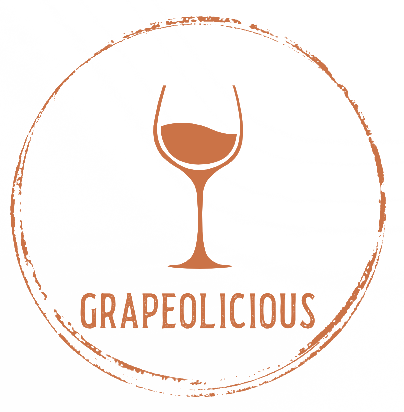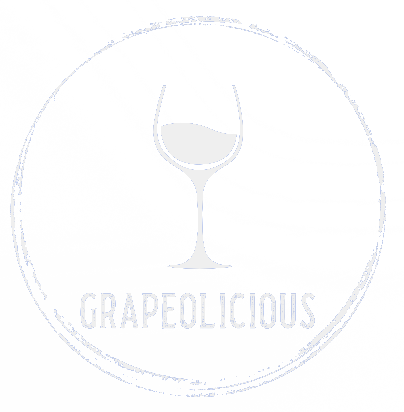Champagne: Understanding the Fun with Fizz
In the following, Grapeolicious compares some ways we should consider how to enjoy champagne from storing, chilling, opening, and presenting. We also believe it is imperative to have an understanding of champagne and respect its’ power and effect. However, before we delve into some champagne “myths,” let’s look at how champagne was developed and enjoyed from the beginning.
From the wonderful people at European Waterways Cruises (see “The Lock-Keeper Blog” at EuropeanWaterways.com) comes an expansive description and history of the development of champagne. The following, however, is a small summary, paraphrased to help us understand how and why champagne has become so beloved.
“In the 1st century AD, the Champenois invented the fizzy drink as a fashion in the north of France but, found that they were unable to compete with the neighboring area of Burgundy when it came to making red wines.
With the less favorable weather conditions, meaning that the grapes never fully ripened, wines produced here were pale and more acidic than the red wines made in Burgundy. It was not very popular with consumers until the 9th century where it became associated with kings and the wealthy. Then, in 1693, a monk, Dom Perignon, perfected the production method utilizing a second fermentation” which created the familiar flavors we share and enjoy today.
Now, standard thinking holds that the lifespan of Vintage vs Non Vintage is as follows: Vintage Champagne tends to have a lifespan of between 5 to 10 years, whereas non vintage Champagne typically has a shorter shelf life of about 3 to 5 years. It wasn’t until later in the 19th century that refrigeration was utilized as a method of storage to help sparkling wines last longer to meet these recommendations.
There are “sparkling wines” that are produced in the “methode champanoise” but cannot be presented as champagne due to the restriction that Champagne is actually a region, and sparkling wines made outside that region and therefore, cannot be described as the same.
Armed with some history and understanding about champagne and sparkling wines, we can now review the myths presented in “6 Myths About Champagne Debunked” by Ellie Smith in “Country and Town House” on March 27, 2024, and try to discover whether we are truly “drinking champagne correctly.”
Remember, at Grapeolicious.com, our motto is “Wine Is Grape Fun!” Therefore, wines should be enjoyed by disruptors of snobs (oenophiles who choose to enjoy champagne, or any wine, as they want) in fun environments, not solely for the stuffy, rigid, and the judgmental traditionalists. The primary challenge has become price but, that will be addressed in another post. So, back to what is mean’t by “drinking champagne correctly?”
In celebrations, the pop and the spray is “a symbol of the moment.” The pop is preferred to ring in the celebration and the spray embellishes it. Let the celebrations commence and continue to be enjoyed as champagne, or sparkling wine, is the celebratory symbol of choice. Though there are certain rules, or protocols, to opening and enjoying champagne, we must be free to enjoy it in the preferred manner of any disruptor.
Moving on, we find there are numerous schools of thought on the vessels used to bring the bubbly to our lips. The flute vs “a tall, rounded, tulip-shaped glass” and all vessels in between present varied schools of thought to the enjoyment of the fizzy delight. We at Grapeolicious still believe in, to each their own. Yes, there are benefits and detractors to various shapes of glasses or other items but, it must come down to personal preference. Let them enjoy as they like within reason.
Now, if by some chance, you have some left over, invest in good quality bubbly stoppers. However, don’t expect the effervescence to remain long term. Odds are it will still go flat by the next day under chilled conditions. So, our recommendation is to finish off the bubbly as it usually won’t survive a fun time anyway. Cheers!
Grapeolicious agrees that bubbly is not just for special moments and “there is no reason why champagne cannot be enjoyed for both big and small wins.” Why not just because? It is true that “champagne also makes an excellent pairing companion” but, one key element left out is the ability of champagne to activate one’s palate. Whether it be a meal or tasting, starting with a champagne accentuates the opportunity for a deeper and more enjoyable experience of what follows.
Now, having “champagne” means that you are savoring the fizzy flavors of the region of Champagne specifically. From anywhere else, you are pouring sparkling wine that can provide merely subtle differences that would not matter unless made in a different method of production. Again, this is another post of discussion but Grapeolicious suffices to say, if you enjoy it, go for it.
Grapeolicious also agrees that the freezer is not the quickest and most effective chilling method for your fizz. “Plunge it into an ice bucket half filled with water and ice, until it reaches a temperature of 8 to 10 degrees Celsius. If you are running ever shorter on time, add two tablespoons of salt to the cold water.” Yes but, if you have the time ahead of your event, a freezer is just fine however, don’t leave it in there more than 35-45 minutes or you will have a fizz slushy. Just sayin’!
So, there you are fizzy lovers. There are those that believe there is only one way to enjoy champagne. Then, there are those that believe you should enjoy it in a manner that pleases you most. There are definitely good tips presented here but, that doesn’t mean there is only one way that can be acceptable in more formal environments vs relaxed environments. Grapeolicious expects you to enjoy as you want but, use common sense and show respect to those providing the fizz. With champagne, or sparkling wine, just remember to be safe, and recognize protocol at events, and you will still have “grape fun!” Enjoy.



